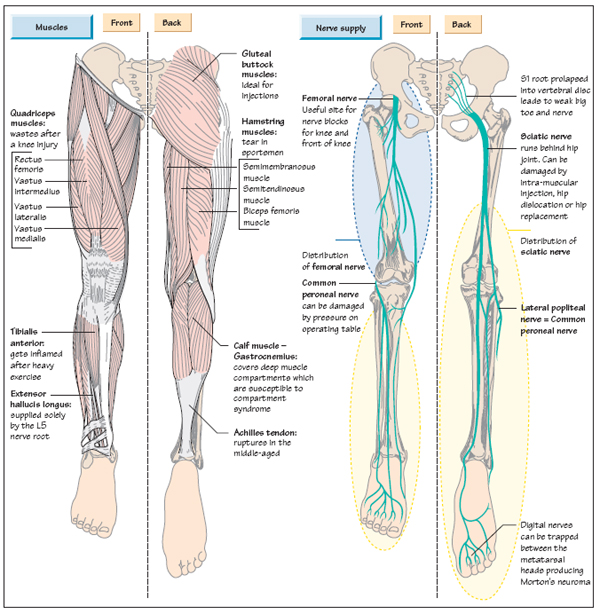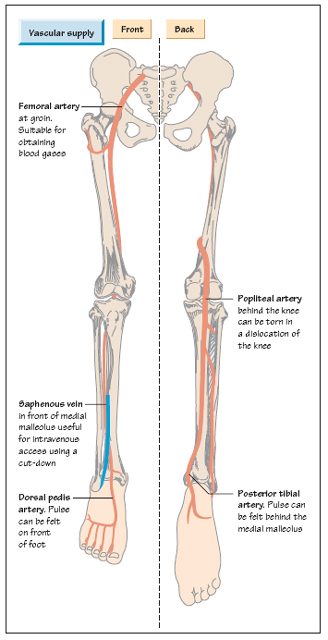14
Anatomy of the leg

Function
The lower limbs are designed to allow a human to move efficiently over rough ground.
- The pelvis acts as a platform for the spine and trunk.
- The hip joints are clothed in powerful muscles and have restricted movement compared with the shoulder girdle.
- The knees have even more restricted mobility to allow the efficient transfer of force from the foot to the body.
- The foot itself is light for energy-efficient movement, but nevertheless is a complex of joints, which allow the sole of the foot to grip and conform to uneven ground.
Nerves
The femoral nerve supplies mainly the front of the upper leg; the sciatic nerve supplies the back of the thigh, then the whole of the lower leg and foot. The sciatic nerve is susceptible to injury as it passes just behind the hip joint (dislocation and retractors used at joint replacement) and from poorly placed intra-muscular injections. The peroneal nerve can be damaged on the operating table and by obstetric stirrups.

Vessels
The blood supply to the leg is mainly supplied through the femoral artery which passes from the groin to the back of the knee where it becomes the popliteal artery
Stay updated, free articles. Join our Telegram channel

Full access? Get Clinical Tree



